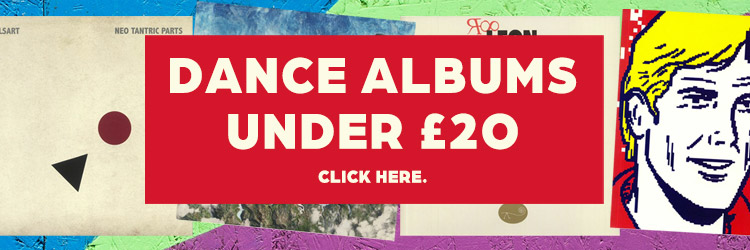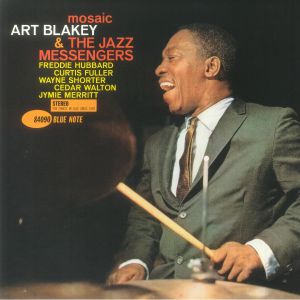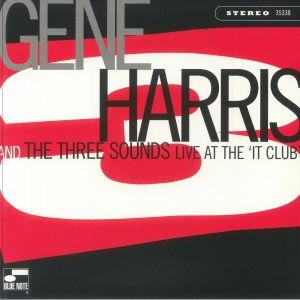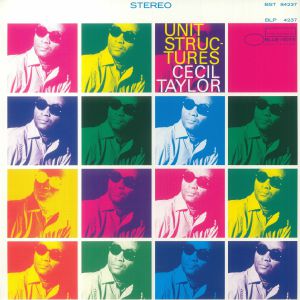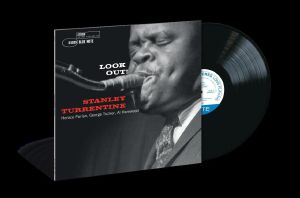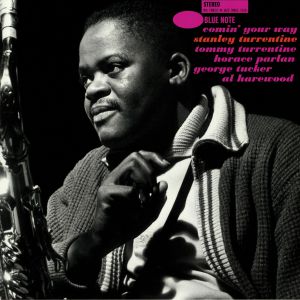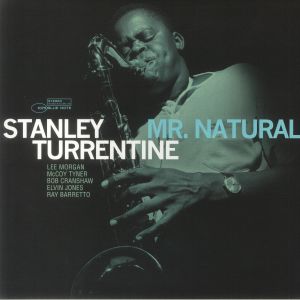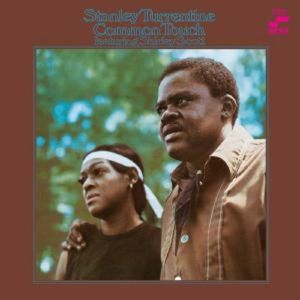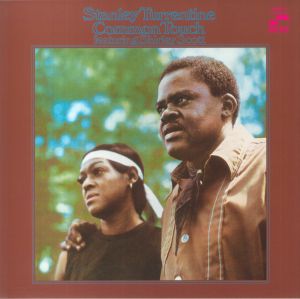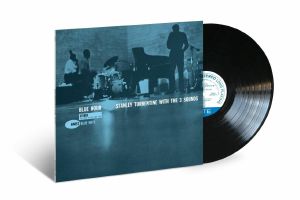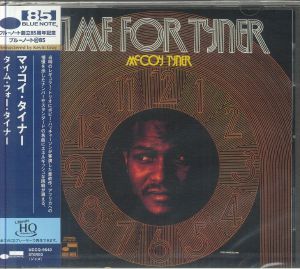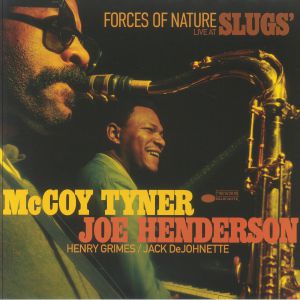Filter
Genre
Stock
Music
Artist
Label
Featured
Release Title
Price
Back catalogue: Funk Soul & Jazz
Juno's full catalogue of Funk Soul & Jazz
Álbumes
Mosaic (reissue) (180 gram audiophile vinyl LP)
Cat: 552425 3. Rel: 19 Oct 23
Review: Blue Note reissue the drummer Art Blakey and his Jazz Messengers' time-honoured hard bop album Mosaic, often cited as among his best. From the titular opener to the seguing montage-worthy sequences of 'Arabia', 'Crisis' or 'Down Under', we're met with huge, extruding saxes and trombones, backed by Blakey's un-pin-downable drumming, evocative of huge towering New York skylines and crowd bustle; apparently, the album was so tightly performed it needed no alternate takes.
… Read moreIntérprete: Juno Recommends Jazz
in stock $29.06
Introducing (reissue) (limited heavyweight vinyl LP)
Cat: 382936 0. Rel: 10 Dec 21
in stock $28.23
Live At The It Club (reissue) (180 gram audiophile vinyl LP)
Cat: 588079 0. Rel: 19 Sep 24
Review: The Three Sounds, one of Blue Note's most productive acts, evolved significantly by 1970. Under the leadership of pianist Gene Harris, the trio welcomed bassist Henry Franklin and drummer Carl Burnett into its ranks, infusing their blues and gospel foundations with a funkier, more vibrant rhythm. This shift is brilliantly captured in Live at the 'It Club', a rousing live recording that highlights their transformation. The record demonstrates how the trio, especially through Burnett's drumming and Franklin's basslines, pushed their sound into funkier territories while maintaining their soulful hard-bop roots. The rhythm section's infectious groove drives the music, giving it a loose, swinging feel where the groove is paramount. Tracks like 'Funky Pullett' and 'Love for Sale' showcase this new dynamic, where the interplay between the trio adds layers of grit and soul to their performances. Live at the 'It Club' remains a thoroughly enjoyable listen with the trio's unique blend of soul-jazz with a fresh, funky twist proudly presented.
… Read moreIntérprete: Juno Recommends Jazz
in stock $30.17
Unit Structures (reissue) (180 gram audiophile vinyl LP)
Cat: 552365 7. Rel: 17 Aug 23
Review: Cecil Taylor released Unit Structures on the Blue Note label in 1966. It was his debut on the label and was quickly followed up by a second album in the same year with Conquistador! This one came with an essay by Taylor entitled Sound Structure of Subculture Becoming Major Breath/Naked Fire Gesture and is known for its high energy and atonal sounds. It sat well within the plasm of the free-jazz of the times but was at the sharp end with its ferocious paying styles. It is a record rich on colour and mathematical complexity with two bassists adding their own low end weight.
… Read more in stock $28.23
Look Out (Classic Vinyl Series) (180 gram audiophile vinyl LP)
Cat: 651497 4. Rel: 15 May 25
Review: Stanley Turrentine's debut as a bandleader arrived in June 1960, just a few months after his notable sideman role on Jimmy Smith's Midnight Special and Back at the Chicken Shack. With these albums cementing his status as a standout player, Blue Note boss Alfred Lion wasted no time bringing Turrentine back into the studio to record his first outing as a leader. The result announced the arrival of his deeply soulful tenor saxophone, immediately marking him as a key figure in the hard bop scene. Turrentine's approach was distinctiveieach note infused with emotion and a deep sense of groove. His compositions, like 'Look Out' and 'Minor Chant', alongside tunes by Parlan and Clifford Brown, revealed his mastery of both melody and rhythm. The session was anchored by a strong rhythm section, featuring pianist Horace Parlan, bassist George Tucker, and drummer Al Harewood, each contributing to the album's powerful sound. A highlight is the ballad 'Journey into Melody', where Turrentine's ability to infuse warmth and depth into a song is on full display. This all-analogue remastering offers a true-to-the-original listening experience, preserving the warmth and clarity of this essential jazz release.
… Read more in stock $29.87
Comin' Your Way (Tone Poet Series) (reissue) (gatefold 180 gram audiophile vinyl LP)
Cat: 779127 6. Rel: 28 Feb 20
Intérprete: Juno Recommends Jazz
in stock $30.44
Mr Natural (Tone Poet Series) (gatefold 180 gram audiophile vinyl LP)
Cat: BST 1075. Rel: 06 Apr 23
Review: The Tone Poet series is one in which Blue Note revisit some of its most classic albums and gives them some fresh attention. This vinyl edition of Stanley Turrentine's 1964 recording of Mr. Natural was produced by Joe Harley and has been mastered by Kevin Gray, who worked from original master tapes. It's pressed on 180g vinyl and comes in a lovely and deluxe gatefold tip-on jacket. It is a great record from the soulful tenor saxophonist and Blue Note stalwart with help from Lee Morgan on trumpet, Elvin Jones on drums, McCoy Tyner on piano, Bob Cranshaw on bass, and Ray Barretto on congas.
… Read moreIntérprete: Juno Recommends Jazz
in stock $37.09
Common Touch (remastered) (UHQ-CD with obi-strip)
Cat: 589719 2. Rel: 15 May 25
in stock $17.71
Common Touch (Classic Vinyl Series) (180 gram audiophile vinyl LP)
Cat: 453532 7. Rel: 20 Oct 22
Intérprete: Juno Recommends Jazz
in stock $29.87
Blue Hour (Classic Vinyl Series) (180 gram audiophile vinyl LP)
Cat: 583203 6. Rel: 16 May 24
Review: Blue Note's superb Tone Poet Series continues with an album that resulted from Alfred Lion's inspired idea to put tenor saxophonist Stanley Turrentine and The Three Sounds - a trio including pianist Gene Harris, bassist Andrew Simpkins, and drummer Bill Dowdy - together on this album from 1960. Blue Hour stands as one of the most soulful hard bop albums in the Blue Note collection. Both Stanley Turrentine and The Three Sounds were at the outset of their enduring relationships with the label, with Turrentine recently debuting as a leader with "Look Out" and the trio introducing themselves in 1958 with "Introducing The 3 Sounds." This late-night session captivates with seductive renditions of four standards, including 'I Want A Little Girl,' 'Gee Baby, Ain't I Good To You' and 'Since I Fell For You.'
… Read moreIntérprete: Juno Recommends Jazz
in stock $30.17
in stock $17.71
in stock $19.65
Forces Of Nature: Live At Slugs (gatefold 180 gram vinyl 2xLP)
Cat: 659751 5. Rel: 21 Nov 24
Review: Forces of Nature: Live at Slugs' is a thrilling, never-before-released live recording of jazz giants McCoy Tyner and Joe Henderson, captured at Slugs' Saloon in 1966. Joining them are bassist Henry Grimes and drummer Jack DeJohnette, forming a powerhouse quartet. The performance, unearthed from DeJohnette's personal archives after nearly six decades, showcases the intense musical chemistry between Tyner and Henderson, who were central figures in the 1960s jazz scene. The recording, originally engineered by Orville O'Brien, brings the energy and creativity of this 1966 set to life. With expert mastering by Matthew Lutthans, the sound is crisp and vibrant, transporting listeners back to the legendary Slugs' Saloon. Forces of Nature is a amazing look into an era of jazz brilliance.
… Read moreIntérprete: Juno Recommends Jazz
in stock $40.41

 USD
USD




